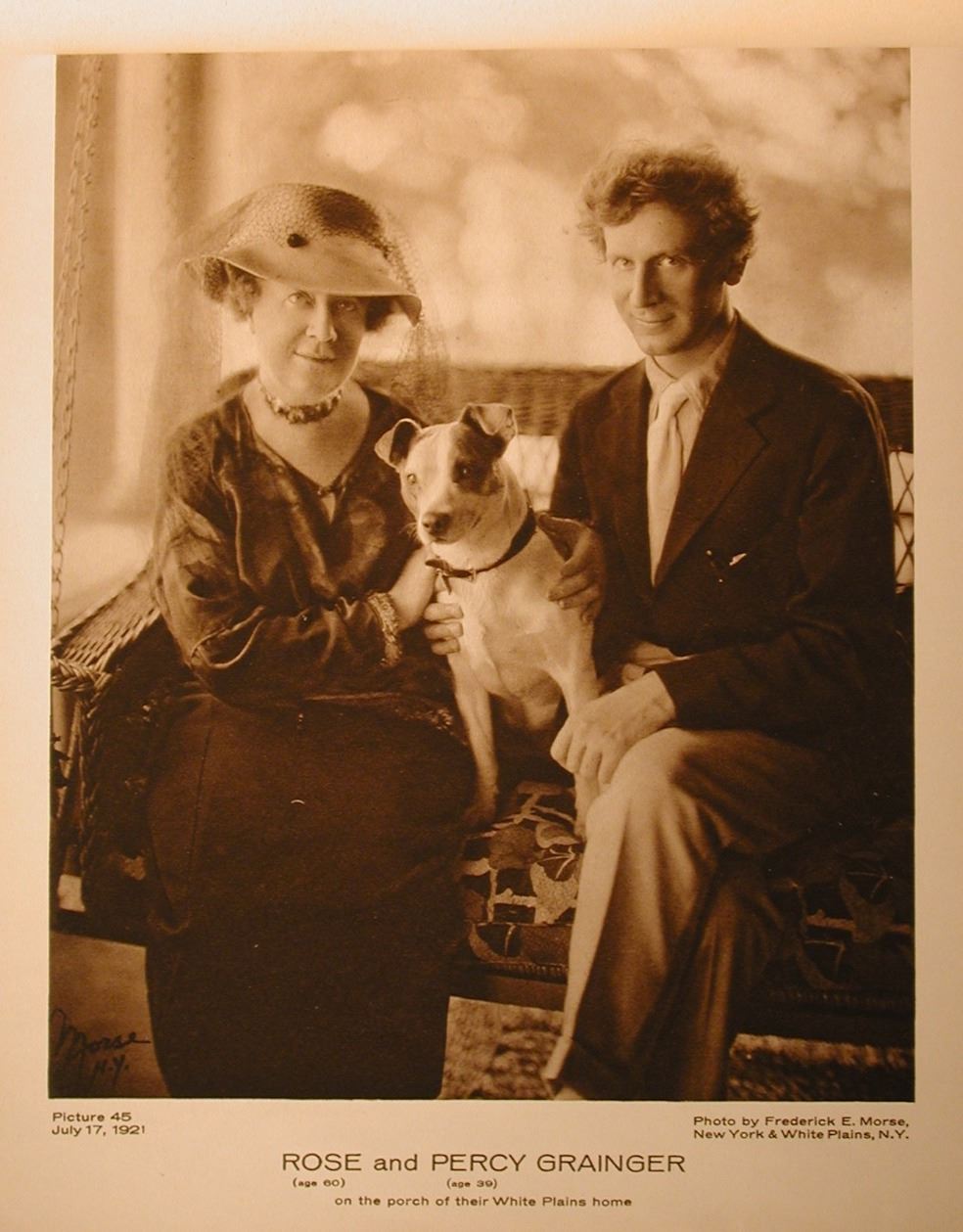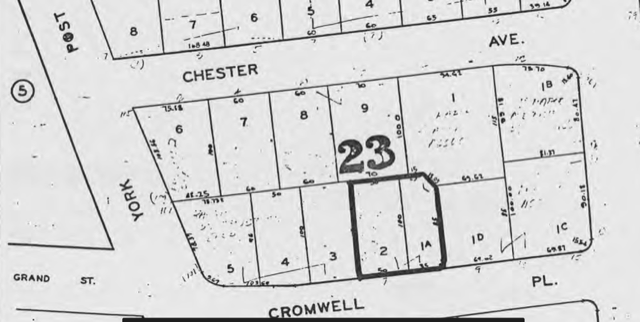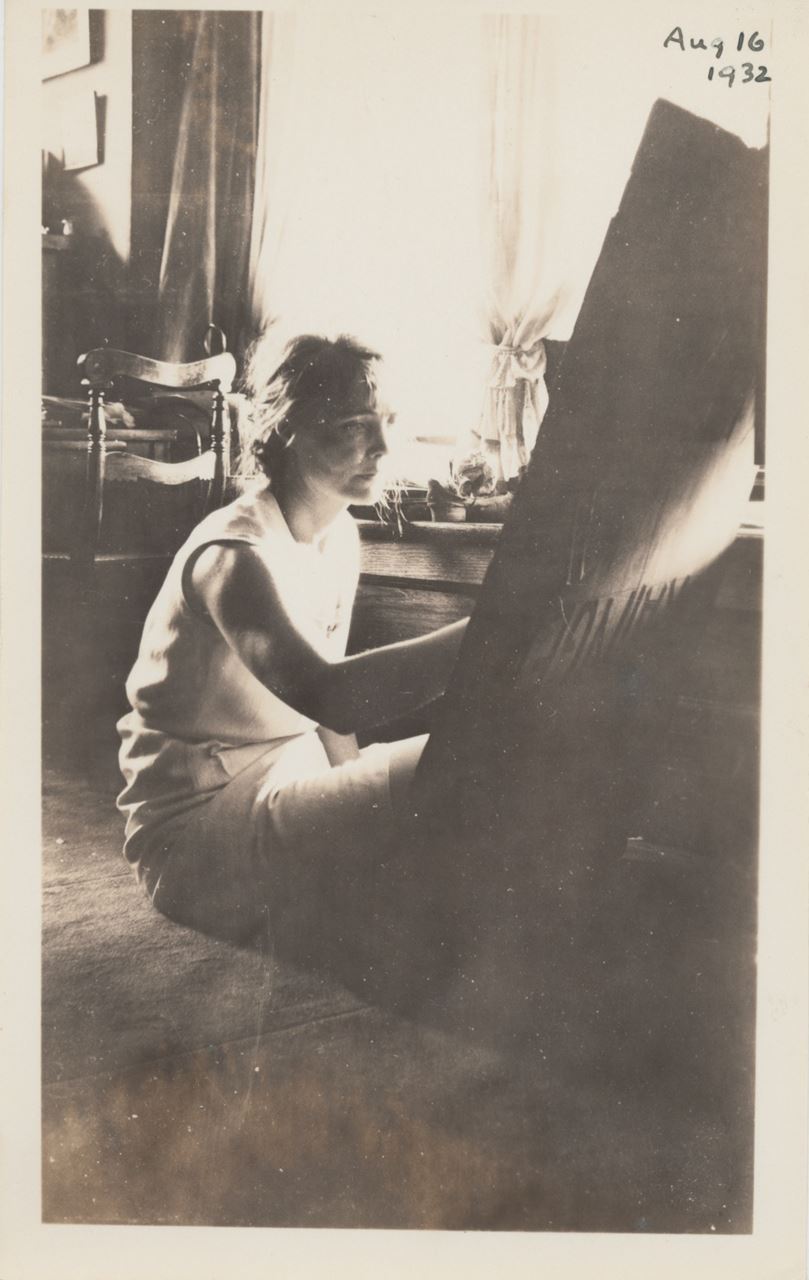,%20c1932.jpeg)
Following is an excerpt from “The Power of Place: The Percy Grainger Home and Studio” by Susan Edwards Colson, recently published in The Grainger Journal, Volume 17, Number 1. Print and digital copies of the journal are distributed free of charge to members of the Percy Grainger Society. Non-members may purchase individual print copies via our distributor, Lulu.com. Please consider joining as a member!
Percy Grainger made news in 1921 [1]when bought he a house in White Plains. He, and his mother, Rose, had arrived at Boston harbor, via the ship Laconia, on September 14, 1914. They left London in haste, putting their furnishings in storage. After arriving they immediately traveled south by train to New York City, becoming residents of one New York City rental or the next for the seven more years. During this time, Percy first established himself as a pianist extraordinaire, followed with a brief tour as a bandsman in the US army. But they could not accommodate their London belongings, and truly settle in, until they had the space and permanency of a home.
After seven years, they certainly understood that the greater New York area offered an overwhelming choice of residences and lifestyles. There is the island of Manhattan itself, in the 1920’s as today, the hub of a thriving music and art scene, as well as four (huge) surrounding boroughs that comprise New York City proper. There was suburban Long Island to the east, suburban Westchester County to the north, and the entire state of New Jersey to the west; with Connecticut to the Northeast. What to do?
The Grainger’s chose White Plains, the county seat and near geographical center of Westchester County. White Plains offered quiet county living (including the physical space between houses to play piano twenty-four hours-per-day, if necessary, impossible in the city) punctuated with train service leading smoothly south to Manhattan in under thirty minutes. There were also easy train connections within a day to Cincinnati and Chicago. Dallas? Los Angeles? Calgary? A day or two more perhaps, but easily done.
Grainger’s manager, Antonia Sawyer, herself a Westchester (Scarsdale) resident, was influential in this choice. In 1931, Grainger was interviewed for a local newspaper column, “Our Famous Neighbors.” [2] When asked why he chose White Plains as his home he explained:
When our musical instruments and furniture came over from London in 1921, White Plains was suggested to my mother by Antonia Sawyer (his manager) as a good place for the storage of musical instruments of which there are an endless array. For instance, two harmoniums, about ten guitars, two metal marimbas, one wooden marimba, one staff bells, and several oriental and African instruments.
Any suitable house had to be large, private, quiet, and well-located for travel. Then, the selected house at 7 Cromwell Place, had to be organized. The shipment came over in early summer 1921, and Rose and Percy set about arranging it. Rose sorted and labeled the keys. Percy set up the music room. Both of them enjoyed the large front porch, feeding the squirrels while having tea.

When asked why the smallest room in the eleven-room house was chosen as the music room, Grainger replied “I like my music loud and close.” [3] As various house photos have shown over the years, this preference for “loud and close” was consistently observed in the music room, the first room to the left when a visitor arrives, with various pianos and an-ever-present harmonium showing up in photos over the years. The front bedrooms, with Rose in the larger, and Percy in the smaller, were selected and furnished in the style of the day. Again, plenty of storage was necessary, the Grainger’s rapidly filled drawer after drawer. The basement and the third floor were for overflow storage. There were filled, with more added over the years.
Early 20th Century White Plains
During the 1920s the city of White Plains was quickly transitioning into a desirable satellite suburb of New York City. The New York, Westchester & Boston Railroad,[4] completed in the early years of the twentieth century, made New York City an easy commute from the leafy Westchester. Following WWI, a group of community-spirted women organized a house-by-house canvas [5] to locate those who served in WWI (Percy Grainger had served as a bandsman). Each name was entered onto a card file, in the White Plains City Archives. WWI veterans were honored with a monument installed that features an artillery rifle, bearing a simple dedication to soldiers, sailors and marines on its north face.
White Plains is near the midpoint of Westchester County, both geographically and culturally. To the south, high rises and warehouses abound, resembling the Bronx. Heading north, the land spreads gently out into small towns and estates. Beyond White Plains, Westchester County was blossoming in the 1920s and 30s. D. W. Griffith built and operated a movie studio complex on Orienta Point in nearby Mamaroneck. [6] Mary Pickford, as well as Lillian and Dorothy Gish, were filmed there. The Lawrence Family Theatre, a summer stock theater, opened on the Moses Taylor Estate in Mount Kisco. Tallulah Bankhead, Henry Fonda and Margaret Sullivan appeared in production there.
 The Grainger House does not appear in 1900 Map of White Plains. By 1910, residents were Charles and Mable Prigge, along with their three children, Charles, Jr., Jean, and Alan. There was also a servant, Annie Pahockus. With four bedrooms on the second floor, and three (for servants and storage) on the third floor, this configuration would be perfect for a family of five, plus the servant(s) necessary to manage a 2,600 square foot house.
The Grainger House does not appear in 1900 Map of White Plains. By 1910, residents were Charles and Mable Prigge, along with their three children, Charles, Jr., Jean, and Alan. There was also a servant, Annie Pahockus. With four bedrooms on the second floor, and three (for servants and storage) on the third floor, this configuration would be perfect for a family of five, plus the servant(s) necessary to manage a 2,600 square foot house.
Cromwell Place/Chester Avenue, only one block long, had nine parcels. There were three buildings among the five parcels on the Cromwell side: A private residence at the corner of Cromwell/Boston-New York Post Road occupied the first three. Then, the Grainger home resided on on parcels 2 and 1A. Parcel 1 was the formerly the grounds for the annex to the Keeley Institutes for Inebriates[7]. The Institute was founded in 1879, with a branch in rural White Plains. Those seeking Dr. Leslie Keeley’s Gold Cure (a potion containing “a double chloride of gold containing old salts, alcohol, and morphine cannabis, suspended in colored water) included alcohol users plus “opium inebriates” and “morphine fiends.” Their original White Plains locations had overflowed capacity and so the institute added an annex on Cromwell Place. The annex was closing by the time Percy and Rose arrived, but the large parcel of land it included allowed Percy to purchase an additional side lot. The Grainger Home today has a large side yard resulting from this early parceling.
Home Sweet Home, 7 Cromwell Place, 1921-79
The house was Percy’s home base for more than half his life. While he performed in many concerts and made many trips, he always returned to 7 Cromwell Place. In 1930, Ella’s daughter, Elsie Fairfax, arrived at Percy’s urging[8]. In residence for many months in the early 1930’s, Elsie was a stenographer at Bush and Heartfield (an insurance agency) in White Plains. Her correspondence from that time remains in a suitcase in her room.
In the 1950s, as his health deteriorated, Percy began to stay closer to home. This allowed him to focus his considerable, but declining, energy on his free music machines. He was gone early in 1961, and Ella Grainger was a widow.
Ella Grainger has the distinction of residing at 7 Cromwell Place longer than anyone else. She arrived in 1928 and died in 1979, making a record of fifty-one years. During the 1960s, she was a member of the Victorian Society, and she hosted gathering of Society members. There were many private visitors, and a few concerts. One such visitor was Dorothy Payne, a former student of Percy’s from the Chicago Music School, and a long-time friend. After Ella’s death, the house slowly disintegrated into frightful condition. For nearly forty years, it was only the occasional, hearty visitor who ventured into the musty, overfilled rooms.

[1] The Daily Pantagraph, Bloomington, Indiana, June 9, 1921 edition, p 8
[2] Keir, Alissa, “Our Famous Neighbors: Percy Grainger of White Plains” The Port Chester Daily Item, February 26, 1931, p. 3
[3] Keir, “Our Famous Neighbors” p. 3
[4] Himmelfarb, Ben and Massena, Elaine, White Plains In the Twentieth Century, Arcadis Publishing, Charleston, South Carolina, 2019, p 32
[5] Himmelfarb, Ben and Massena, Elaine, White Plains, p 31
[6]Westchester County, New York, History 1920-1983: Westchester Comes of Age, 2021, www.westchestergov.com, 2021
[7] Larson, Erik, (2003). The Devil in the White City: Murder, Magic, and Madness at the Fair That Changed America, Crown Publishing Company, a division of Penguin Random House, New York, New York, 2003
[8] Grainger, Percy, Letter to Elsie Bristow, December 25, 1929. White Plains, New York. As reproduced in Simon, Robert, Percy Grainger, The Pictorial Biography, 1983, p. 71